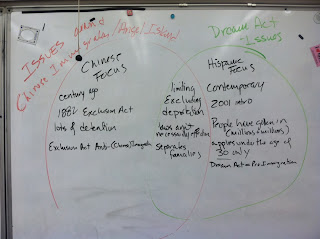Happy Holidays!
Class was based around a lecture on key points in the labor history of the colonies.
Notes began in 1607 with the fact that the founders of the Jamestown colony complained about labor shortages in the "new world."
We left off in 1814 with studying the "Rhode Island System" of manufacturing developed by Samuel Slater.
Remember time is running out to complete work that does not yet demonstrate proficiency!


















